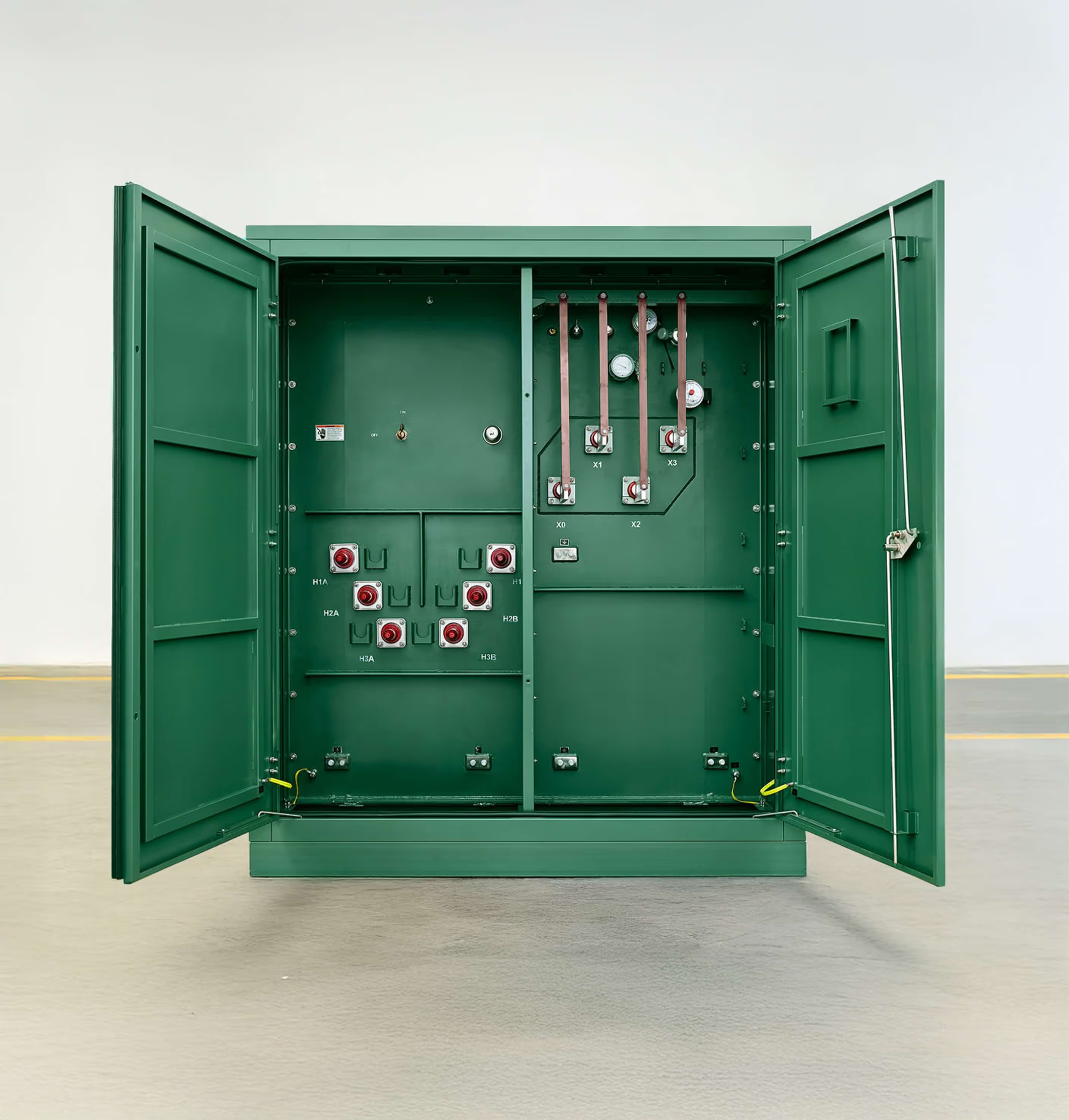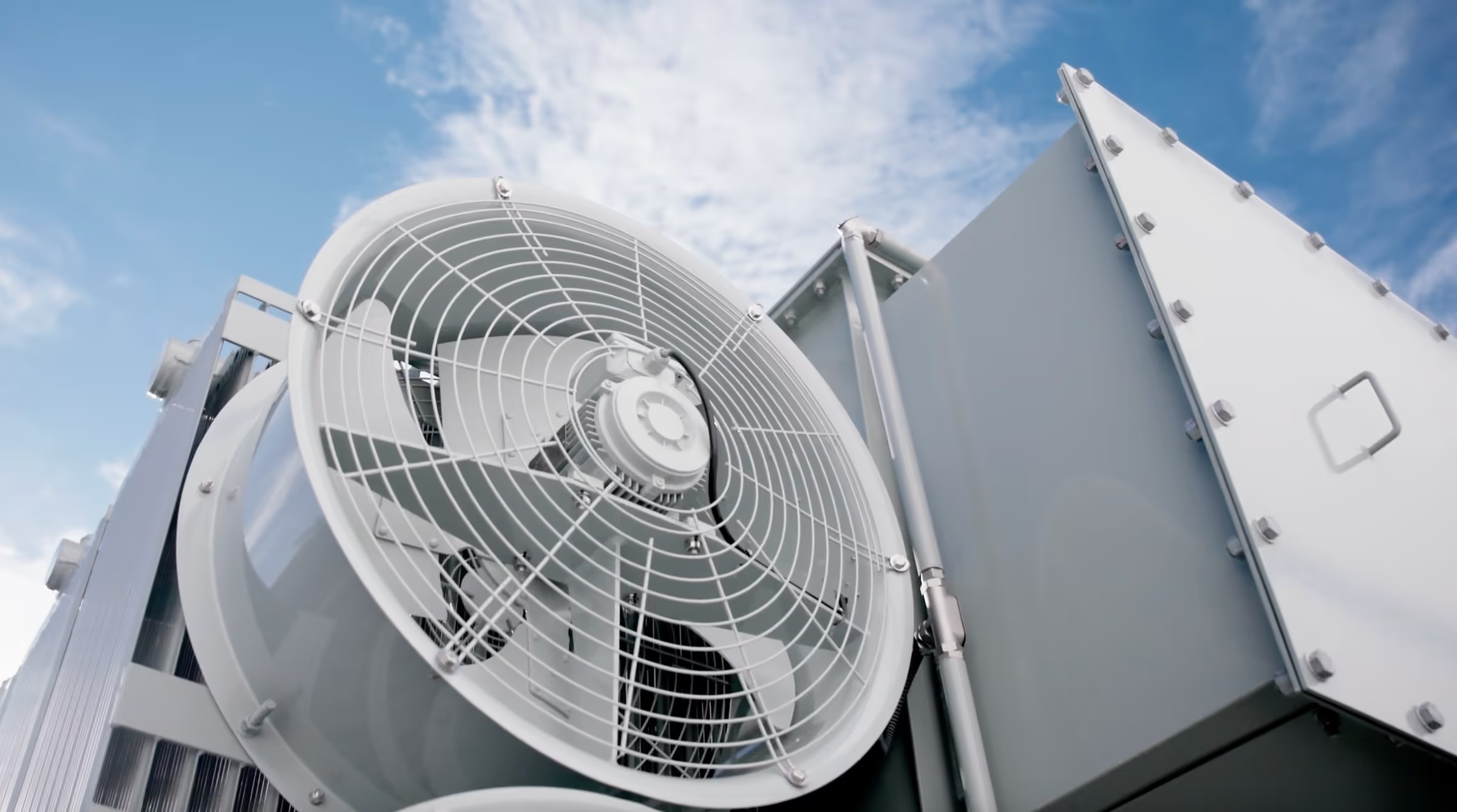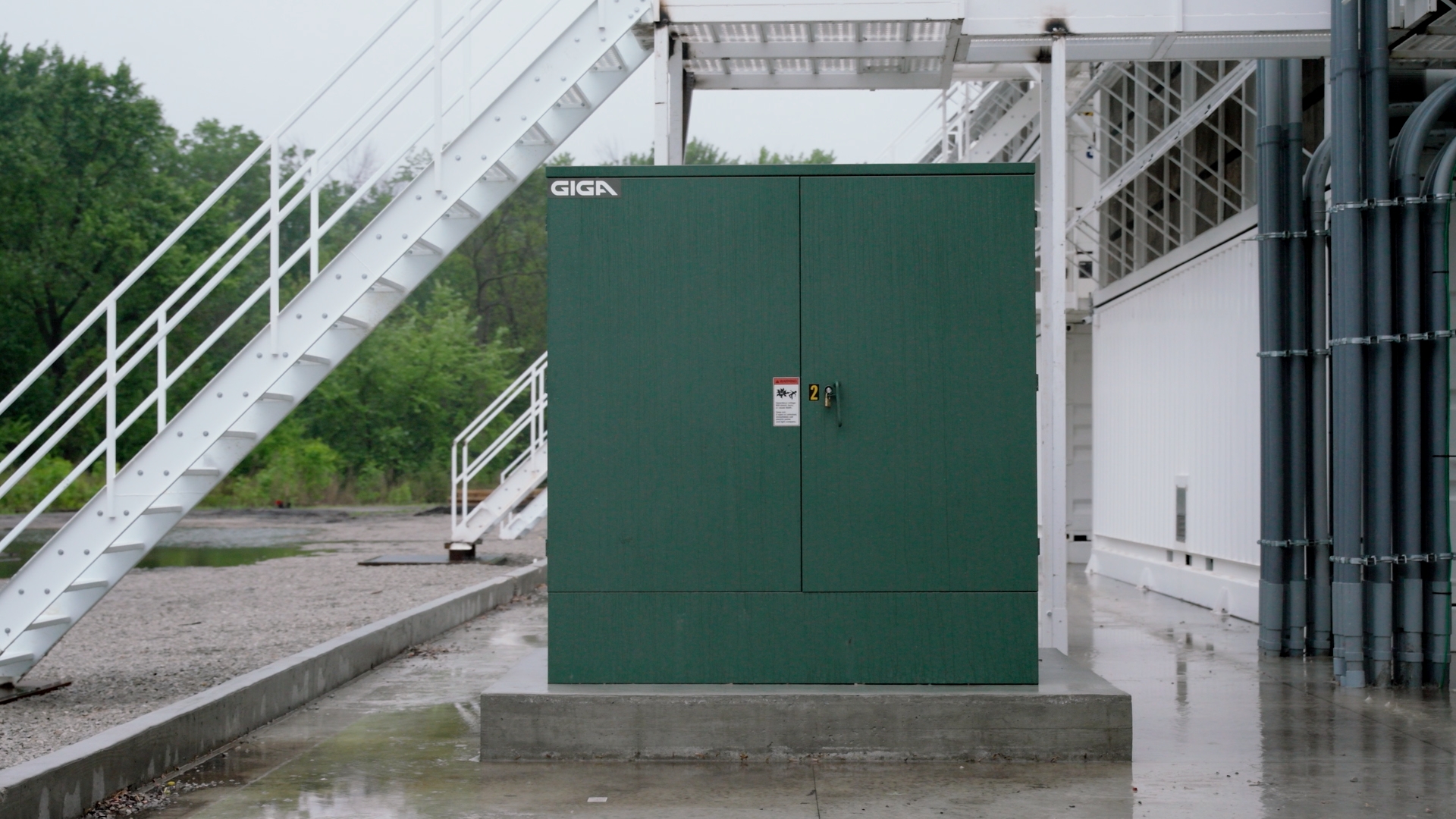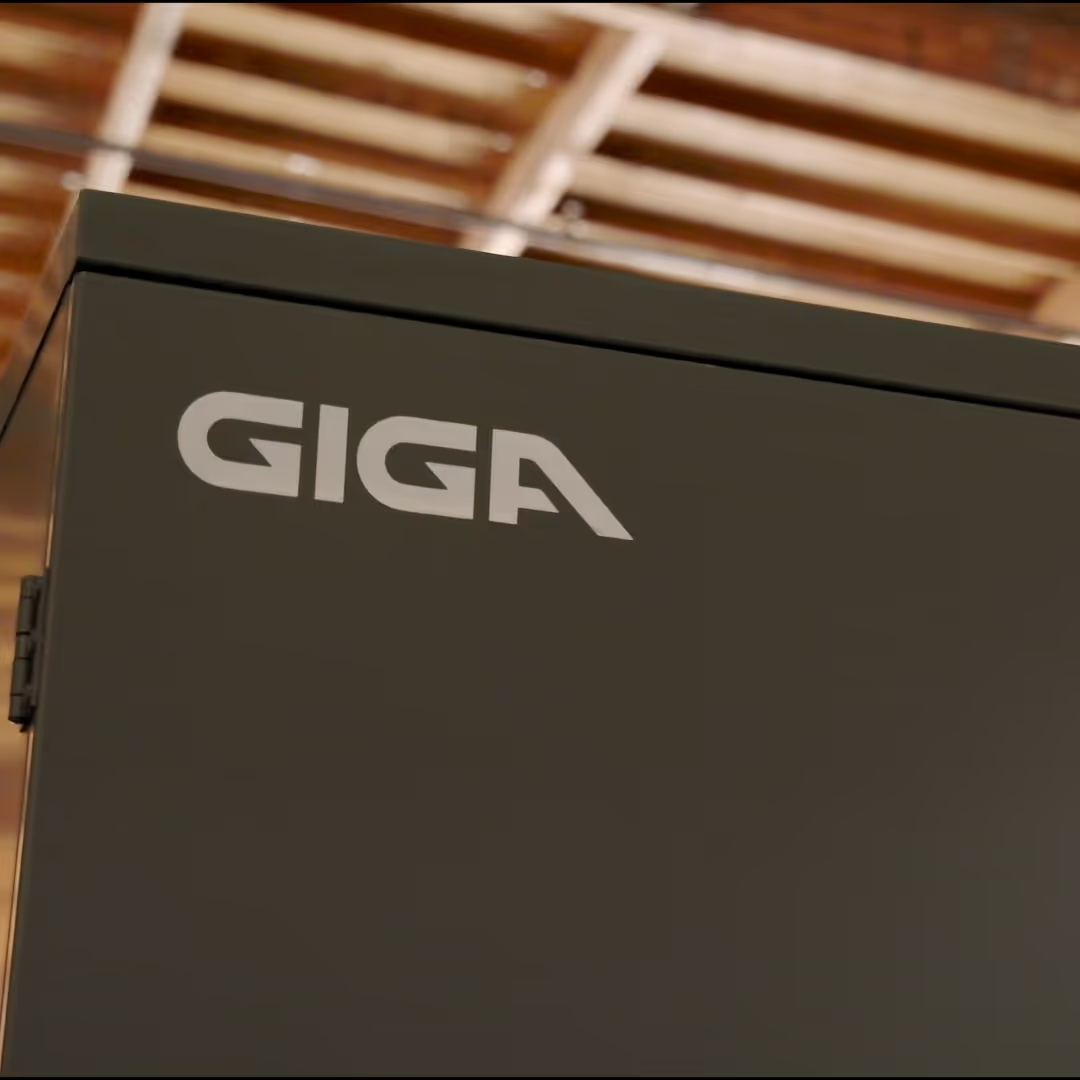Transformer failure is one of the leading causes of downtime in crypto mining, leading to lost revenue, hardware damage, and safety risks. It doesn’t matter if you're powering a single container or scaling a 10 MW site: selecting the right transformer is crucial if you want to make sure your crypto mining operation runs efficiently and can be managed in the long term.
In this guide, we will walk you through all the transformer considerations for choosing a transformer for bitcoin mining. We will cover everything from voltage and transformer types to configuration and common obstacles so you can have a better idea of what to look for.
What is the right transformer voltage for Bitcoin mining?
Power input at bitcoin mining sites typically ranges from medium to high voltage levels, such as 12.47 kV or 24.9 kV. However, mining equipment like ASICs (Application-Specific Integrated Circuits) usually runs at much lower voltages, such as 415/240v or 480/277v. This is where transformers come in.
Transformers work by stepping down voltage to levels that allow safe, efficient rig operation. They do this through a process called electromagnetic induction
Inside the transformer, two sets of copper or aluminum coils, called the primary and secondary windings, are wrapped around a magnetic core. The primary coil receives the incoming electrical current, which creates a magnetic field in the core. This magnetic field then induces a voltage in the secondary coil, which delivers the transformed output. The number of windings on each coil determines how much the voltage is increased or decreased.
Medium voltage padmount transformers
For smaller setups or modular container-based sites, medium voltage padmount transformers are often more appropriate. These units are housed in secure, weatherproof enclosures and are ground-mounted, making them simpler to install and easier to permit than substation systems.
Padmount transformers step down medium voltage for clusters of mining rigs and offer a compact, accessible form factor that supports fast deployment without sacrificing performance.
High voltage substation transformer equipment
If you're operating a mining site above 5 MW, substation-grade transformers are typically required. These systems are designed to handle utility-scale voltages and convert them safely for large-scale use. Substation transformers are custom-built and often include components that provide additional layers of control and protection, such as circuit breakers, surge arresters, and integrated switchgear.
While more expensive upfront, these transformers offer unparalleled reliability and are essential for operations where downtime can cost tens or hundreds of thousands of dollars per hour.
What are the types of transformers used in Bitcoin mining?
After voltage, the next detail you should consider for your Bitcoin operation is the type of transformer you want to use.
Dry-type transformers do not use liquid for cooling and are mostly appealing for indoor installations or tight layouts due to their reduced fire risk and easier installation. However, they struggle with dissipating heat, particularly under continuous high-power loads typical of mining environments.
Oil-immersed transformers, on the other hand, use mineral oil or synthetic fluids to cool internal components, allowing them to handle higher power densities more effectively. Though they require routine maintenance and safety precautions, their durability under sustained load makes them a better option for most bitcoin mining operations.
What are the configurations of transformers?
Before choosing a transformer, it’s important to understand how its electrical setup (also referred to as configuration) affects how power gets delivered to your mining equipment. Configuration refers to how the transformer's windings are connected on both the input (primary) and output (secondary) sides. These setups influence the stability of your voltage, how well your system handles faults, and how compatible the transformer is with your local utility.
Think of configuration as the transformer’s internal wiring pattern: it decides how electricity flows in and out of the unit and how that flow interacts with your site’s grounding and load demands. Choosing the right one can reduce harmonic issues, improve reliability, and ensure your equipment operates within safe voltage limits.
Delta-Wye
Delta-Wye configurations are the default choice in bitcoin mining environments. The input (delta) side handles high-voltage transmission efficiently, while the output (wye) side provides a grounded neutral that stabilizes voltage and supports fault tolerance.
This grounded neutral is especially important for ASIC rigs, which produce high-frequency loads that can stress electrical systems. Delta-Wye transformers help distribute these loads more evenly and mitigate harmonic distortion.
GWI (Grounded Wye Input)
In some regions, utilities may require a grounded wye configuration on the primary side. Known as GWI, this configuration offers added protection and improved fault clearance capabilities. While not as common as Delta-Wye, it may be necessary depending on utility standards or site-specific grounding requirements. Always confirm with your utility provider before specifying a transformer configuration.
What makes transformers more efficient in Bitcoin mining?
Transformer efficiency directly impacts operational expenses for Bitcoin mining. Transformers lose energy in two primary ways:
- No-load losses: These occur even when no current is being drawn, due to core magnetization.
- Load losses: These happen during operation when current flows through the windings, generating resistive heat.
In a mining setup running 24/7, even minor improvements in efficiency can result in significant energy savings. Look for transformers built with high-quality silicon steel cores and low-resistance copper windings. While these features may increase the upfront cost, they offer better performance and lower long-term energy waste.
Type and quality of transformer materials
The transformer’s core and windings aren’t the only parts that matter. The material in your transformers should be high quality all across the board, from metal alloys to insulation, if you want your mining operations to succeed.
Copper is the preferred material for windings due to its superior electrical conductivity and better thermal performance under heavy load. Aluminum is cheaper but less efficient, particularly in high-load environments.
Insulation is just as critical. Bitcoin mining puts transformers under constant electrical and thermal stress. Use transformers with insulation rated for continuous duty and high temperatures, such as Nomex. Low-quality insulation is one of the first failure points in demanding environments.
Do transformers need certifications?
Third-party certifications are essential for ensuring safety, reliability, and regulatory compliance. In the U.S., transformers should meet ANSI/IEEE C57.12 standards and comply with the DOE 2016 efficiency regulations.
If you're sourcing equipment internationally, verify that it meets local or regional standards. Always ask for factory test results, material certifications, and third-party inspection reports. These documents offer peace of mind and reduce the risk of equipment underperformance or failure.
How long are lead times for transformers?
Lead times can significantly affect your project timeline. While some dry-type or pad mount models may be available off the shelf, custom oil-immersed transformers often require 20 to 30 weeks for manufacturing and delivery.
Pro Tip: Giga always has transformers ready to ship, with custom orders available on fast lead times. View current inventory online or contact us for lead times on custom orders.
If you want to avoid delays, start procurement as early as possible in your project planning. Even small adjustments to transformer specs, such as voltage tolerance or enclosure type, can dramatically shorten lead time.
Common problems with transformers in Bitcoin mining (and how to avoid them)
Bitcoin mining environments place unique and continuous stress on transformers. Here are the most common problems and how to mitigate them effectively:
Overheating
Overheating is the leading cause of transformer failure. Causes include undersizing, poor airflow, or inadequate cooling systems. Prevent it by selecting oil-immersed models with active cooling features, ensuring the installation site allows for effective heat dissipation, and monitoring transformer gauges closely.
Triplen harmonics
Triplen harmonics (3rd, 9th, 15th) are common in mining setups due to the nonlinear loads created by ASICs.
These harmonics increase core and winding temperatures, shortening transformer lifespan. Use K-rated transformers designed specifically to handle this type of electrical distortion. If you suspect your system has significant harmonic distortion, a transformer with a K rating of K-13 or greater is recommended.
Nuisance tripping
Frequent breaker trips can stem from excessive inrush current or improper grounding.
Choose transformers engineered to minimize inrush and greater overload fusing and confirm your grounding configuration complies with utility and equipment requirements.
Compromised insulation
Thermal and harmonic stresses degrade insulation over time, increasing the risk of internal faults. Select transformers built with thermally rated insulation like Nomex, and confirm they’re designed for continuous duty cycles.
Higher than normal failure rates
A pattern of failures typically points to misaligned specs, grounding issues, or harmonic overloads. Re-evaluate your site’s electrical data and transformer configurations to identify and correct mismatches before they cause long-term damage.
How Giga offers better choices for Bitcoin miners
At Giga, we engineer transformers that will keep your Bitcoin mining site operating smoothly and efficiently for the long run. Our designs are informed by real-world field data with a focus on practical functionality and long-term durability. Here’s why Bitcoin mining operators trust Giga:
- Externally housed gauges: All our transformers include external gauges for monitoring oil levels and temperature. These features allow for fast, non-invasive diagnostics that minimize downtime and support proactive maintenance.
- Faster supply chain: We stock the most in-demand transformer models for mining and streamline production for custom builds. This allows us to reduce lead times and deliver on tight schedules.
- Support from real mining experts: Our team includes engineers and field experts who have worked directly with mining operations. We help you choose the right transformer, guide your installation, and provide ongoing support to ensure your power systems perform under pressure.
Transformers may not be the flashiest part of your mining setup, but they’re still a huge part of it. They impact everything from uptime and energy cost to safety and equipment longevity. Pick the right one to maximize earnings and minimize costs.
Need help choosing the right transformer? Our team is ready to help you find a solution so you can focus on scaling your mining operations. Contact us to learn more.






